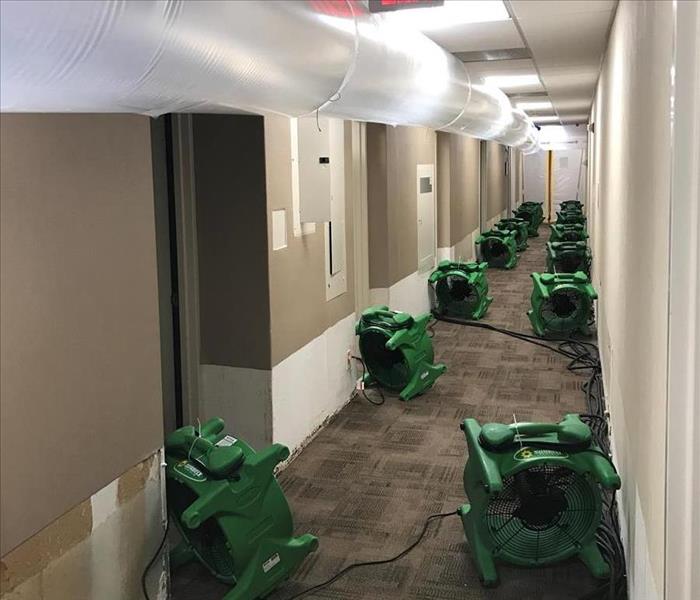Installation of Air Movers
5/20/2019 (Permalink)
Air movers are placed in the environment to ensure rapid evaporation across all affected surfaces. The number of air movers necessary depends upon the number of wet surfaces, the amount of water present, and the ability for air to reach each wet material (e.g., wall cavities, behind cabinets, and under contents).
The IICRC S500 Standard recommends that air mover installation quantities should be based on the amount of wet surface area in affected spaces. For the initial phases of drying, air movers should produce continuous airflow across affected material surfaces. A step-by-step process for determining the proper number of air movers is:
- Place one air mover for each affected area.
- Add one air mover for every 50 to 70 sqft. of affected floor area.
- Add one air mover for every 100 to 150 sqft. of affected wall surfaces (above 2') and ceiling surfaces.
- Add one air mover for every room offset or inset greater than 18 inches.
This calculation should provide an appropriate amount of air movement for most water intrusions, but can vary depending of the situation and type of materials affected.
Once the number of air movers to be installed has been determined, several factors will influence their actual placement. These factors include: the type of material affected, the degree of saturation, the accessibility of the actual wet surface, power availability and equipment availability. Below are some general guidelines for installation of air movers:
- Air movers are directed toward the wall at a 5 to 45 degree angle, depending on the type of air mover.
- The air mover's snout will almost touch the wall, within in 1 to 2 inches.
- All air movers in each area will face the same direction to ensure that air movers are not pushing against each other.
- When placing air movers, we need to consider the need for circulation throughout the affected area.
- Specialty air movers may be necessary if building cavities require air flow.





 24/7 Emergency Service
24/7 Emergency Service